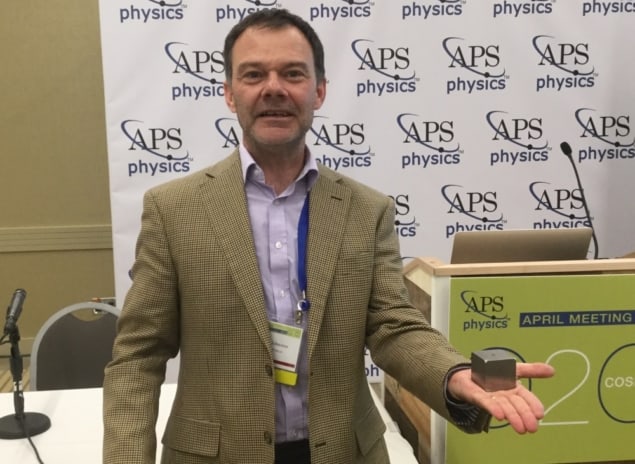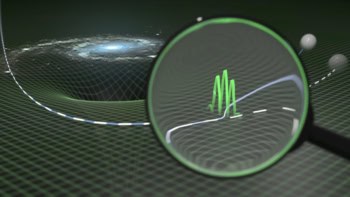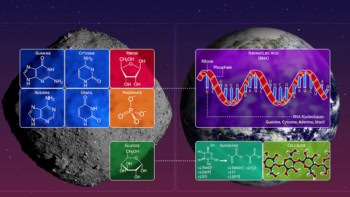
Any guesses about what I’m holding in my hand? It’s metallic and very heavy.
If you guessed a tungsten replica of a LISA test mass, you are right.
The real test masses are made of gold and platinum, according to NASA’s John Baker who brought the replica to the April Meeting of the American Physical Society here in Columbus, Ohio.
This morning Baker gave an update about the status of the LISA space mission, which involves putting three such masses in three spacecraft that will orbit the Sun – hopefully by 2034.
The relative positions of the masses will be monitored by exchanging laser light between the spacecraft. The plan is to use the configuration to detect gravitational waves from much larger objects than currently possible using the ground-based LIGO-Virgo detectors.
Ahead of schedule
Unlike many big science projects, LISA is actually well ahead of schedule – at least in terms of proving that it is actually possible to make it work. In 2016, scientists working on the LISA Pathfinder space mission were able to isolate a 2 kg test mass from acceleration noise at a special “Lagrangian point” between the Earth and the Sun. This was a proof-of-principle exercise that not only succeeded in its preliminary goal, but also met the actual requirements for the LISA mission much sooner than expected. Then about a year later, the scientists showed that the mass can also be isolated from interference associated with the buildup of static electricity.
Baker says that the next proof-of-principle test involves showing that it will be possible to use lasers to measure the relative positions of the spacecraft. This will be done very soon using the GRACE-FO spacecraft, which will be launched next month. The two spacecraft will be spaced 220 km apart as they orbit Earth and the separation between them will be monitored carefully to reveal fluctuations that are related to changes in Earth’s local gravitational field. This information can then be used to monitor the thicknesses of ice sheets or even work-out the amount of water in lakes, rivers or even underground.
Far ranging
FO stands for “follow on” from the original GRACE mission, which operated for 15 years before ending last year. What’s new about GRACE-FO is that it will include a laser ranging system similar to what will be used in LISA. Hopefully these tests will also be successful and LISA will go ahead as planned. Indeed, the main reason why the launch is planned for 2034, rather than sooner, is that the ESA and its partner agencies (including NASA) simply don’t have the budget to launch any sooner. Maybe there’s another country out there with deep pockets that could help.



